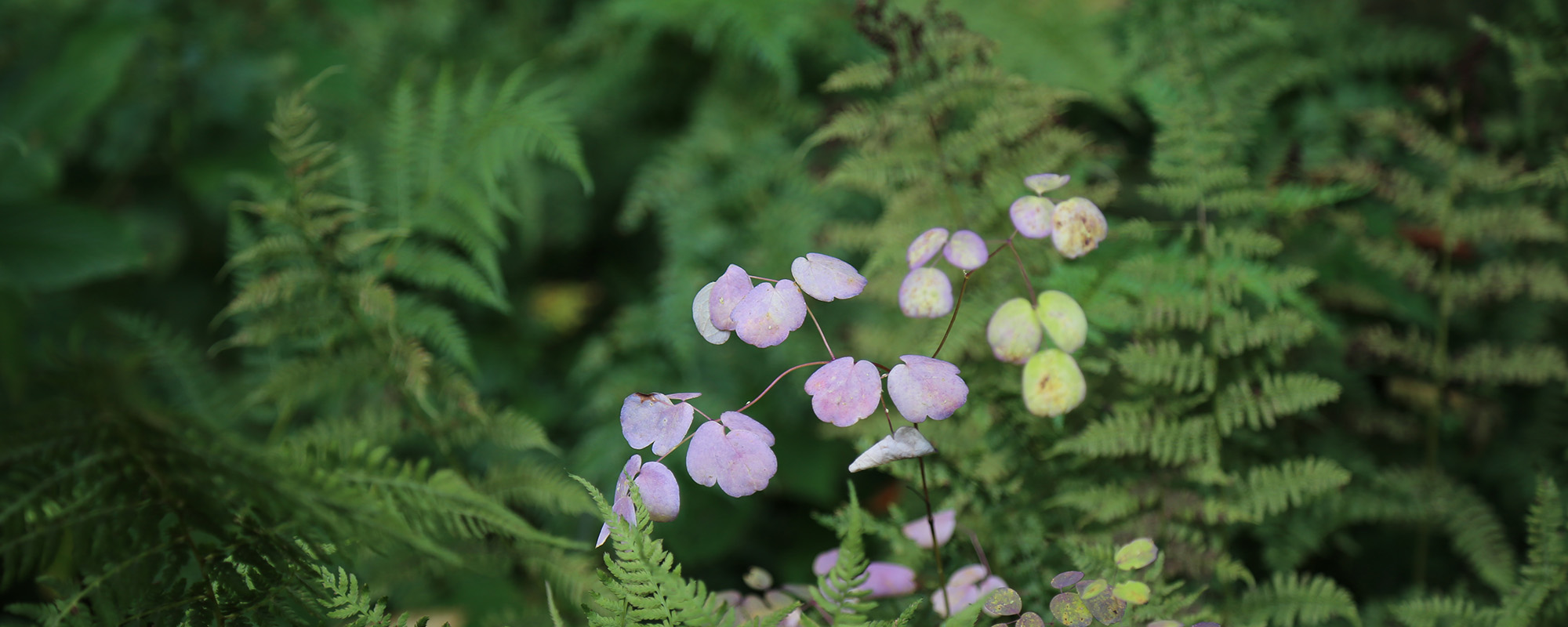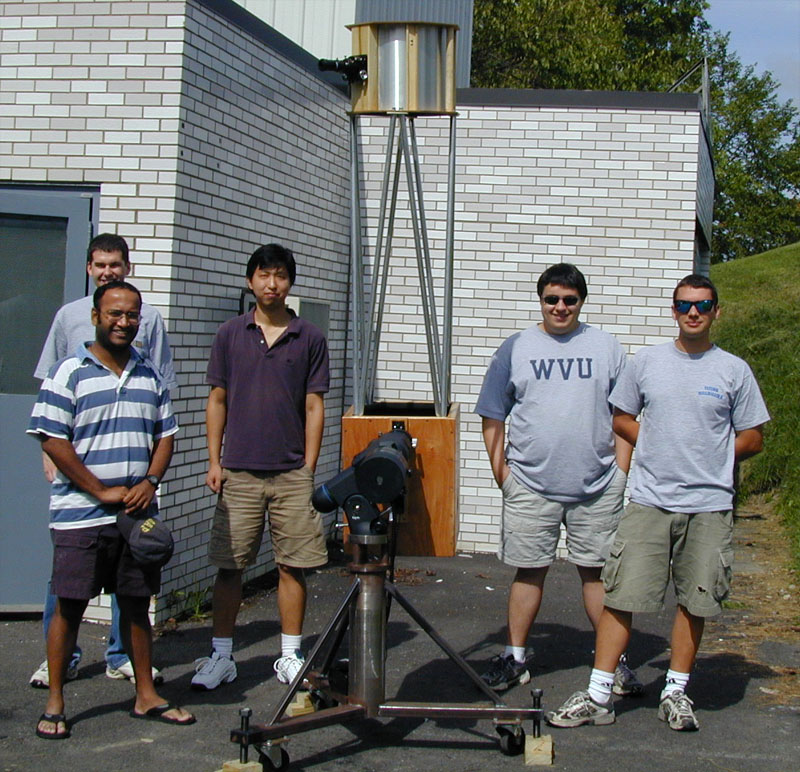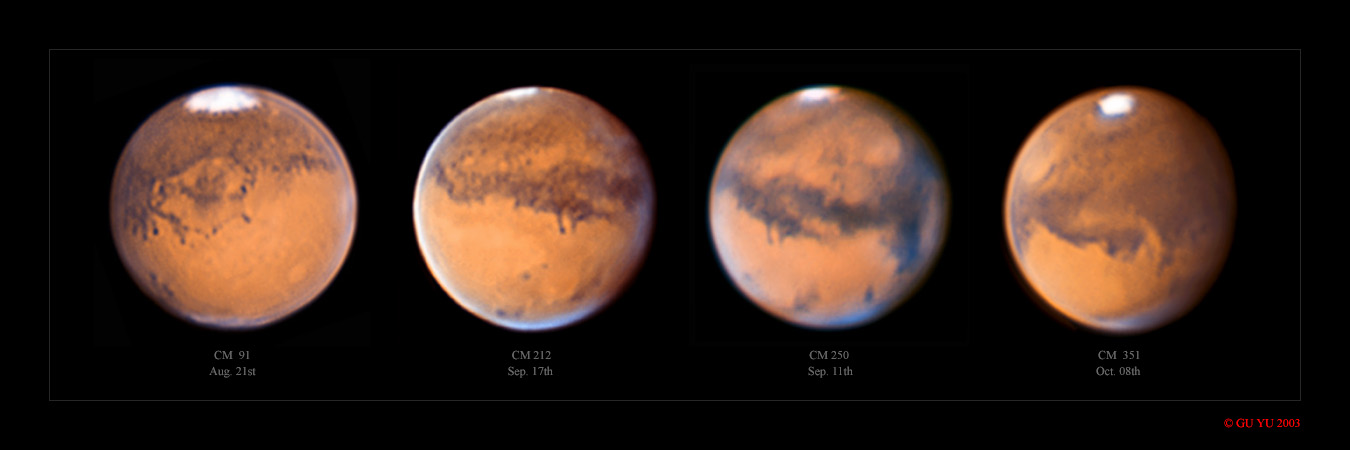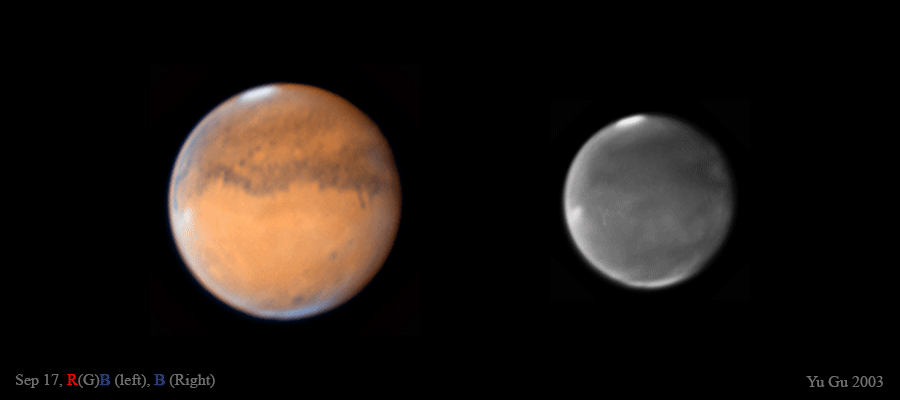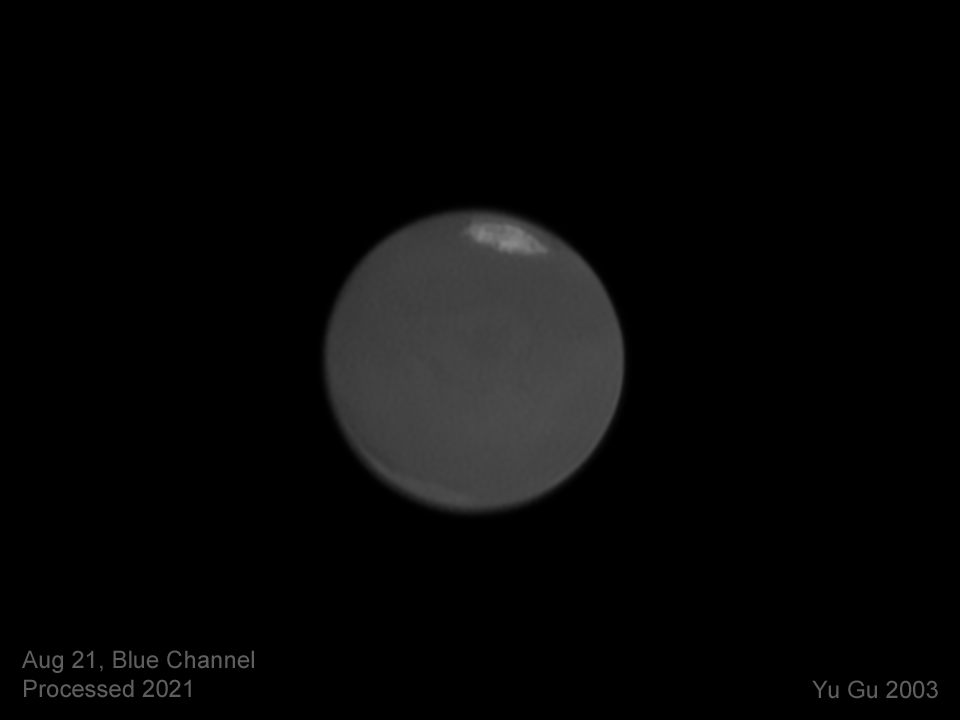Mars opposition in 2003 was a big deal. The media hype was that the two planets (Mars and Earth) would be at their closest points in almost 60,000 years. A hoax claimed that Mars would look as large as the full Moon… That was a bit exaggerated, of course. Mars reached 25.1 arcsec on Aug 27, 2003, about 1/70 the apparent diameter of the moon.
I had to see all that myself; I made some plans.
First, I wanted needed to upgrade the scope. I was using a Celestron C9.25 and it gave good results on Jupiter and Saturn. But I felt I wanted something bigger. I was luckily approached by TEC’s Yuri Petrunin to loan me (for free!) a 10” Maksutov Cassegrain and a mount. That would have been a great setup; but at over $10k in cost, it was too much for a poor grad student without a car to handle (what if it was damaged or lost?). Plus, I had my own scope in the making…
It was a 12.6” F6 Newtonian on an equatorial mount. The primary mirror was made by Pegasus Optics. It was a very good mirror but was thick (2.1” Pyrex) and heavy. It would take a long time to cool down. With a lot of help from friends, a scope was finished on time.
Another challenge was that Mars would be low in the sky. In 2003, Mars would not rise more than 30 degrees above horizon from my location in Morgantown. It means the telescope had to see through a lot more atmosphere (as compared to higher angles), and the seeing would be poorer. There would also be more atmospheric dispersions. I had tried to make my own dispersion correctors using prisms, but with no luck. Another way of battling this was to image with a monochrome camera and color filters. However, specialized mono cameras were expensive at the time. The popular camera for planetary imagers was a webcam made by Phillips, called ToUcam, which had a color sensor. I was able to find (from someone in Italy) a mono replacement of the ToUcam CCD. After a small surgery, I had a working mono camera. I also made filter sliders that can be controlled by a RC transmitter to change filters remotely (not pretty looking but worked). Finally, I was all set for imaging Mars.
I planned to observe Mars every clear night starting from April (I was young and ambitious at the time), but it rained the whole April. The weather between August and October ended up being great, when Mars was at its best. I remember how proud I was with this set of photos (click to enlarge):
This animation shows the rotation of a cloudy planet. The images on the right were taken with a blue filter, which show orographic clouds over the volcanoes on the left and the morning fogs on the right side.
Fast forward 18 years. After completed a successful Mars imaging season in 2020, I became curious about older images. I thought the original raw data were lost but was fortunate to find some back in a hard drive. Here are reprocessed Aug 21 and Sep 17 images. What has changed since 2003 was mainly the ability to de-rotate the planet and stack images collected over a longer capture time (with WinJUPOS software). But it was really fun to play with older data and bring back those memories.
I also made a new animation of the blue channel images from the Aug 21 data. On that night, there was hardly any clouds on Mars, but the rotation of the south polar cap was fun to see.
Mars will not look any bigger than it was in 2003 for a very long time. But what’s more important is to not lose that passion.

